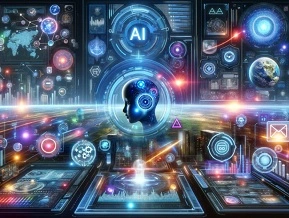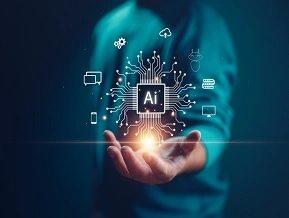Artificial Intelligence Terminology: Explained Simply
AI Glossary of Terms
Welcome to the comprehensive glossary of AI terms by LearnArtificialIntelligence.ai – your trusted companion for navigating the complex world of artificial intelligence. Whether you’re a beginner exploring AI for the first time or a professional refining your understanding, this guide simplifies the core concepts into clear, digestible definitions.
Understanding artificial intelligence terminology is essential in today’s tech-driven world. As AI continues to shape industries—from healthcare to education—familiarity with key concepts will empower you to engage confidently with modern tools and discussions.
Artificial Intelligence Basics
Artificial Intelligence (AI)
AI refers to the simulation of human intelligence in machines that are programmed to think, learn, and solve problems. These capabilities include understanding language, recognizing images, and making decisions.
Machine Learning (ML)
A subset of AI, machine learning enables systems to learn from data and improve performance over time without being explicitly programmed for each outcome.
Deep Learning
A more sophisticated form of machine learning that uses multi-layered neural networks to analyze vast amounts of data and uncover complex patterns.
Neural Network
Inspired by the human brain, a neural network is a framework of interconnected nodes (neurons) used to process and interpret data in machine learning models.
Natural Language Processing (NLP)
NLP allows machines to understand and interact using human language. It's the backbone of AI applications like voice assistants, chatbots, and translation tools.
Computer Vision
This technology enables AI systems to interpret visual data from the world, such as recognizing faces in photos or identifying objects in videos.
Machine Learning Techniques
Supervised Learning
A training method that uses labeled datasets to teach models how to predict outcomes or classify data accurately.
Unsupervised Learning
This technique involves using data without labels, allowing AI models to detect patterns and groupings on their own.
Reinforcement Learning
A learning paradigm where an AI agent improves performance by receiving feedback in the form of rewards or penalties for its actions.
AI Training vs. Inference
- Training: Feeding data into an algorithm so it can learn.
- Inference: Applying a trained model to make decisions or predictions based on new input.
Understanding these artificial intelligence terms is key to interpreting how AI systems learn, evolve, and make decisions in practical applications.
AI Tools Glossary
ChatGPT
Developed by OpenAI, ChatGPT is a large language model capable of generating human-like text for conversations, creative writing, coding, and more.
Google Teachable Machine
An intuitive no-code tool that lets users train simple machine learning models using webcam images, audio, or poses.
Google Colab
A cloud-based environment that allows users to write and run Python code, commonly used for machine learning experiments.
Jupyter Notebooks
Interactive development environments that combine code, visualizations, and notes—ideal for documenting AI workflows.
Kaggle
A platform offering free datasets, competitions, and collaborative environments for learning and practicing AI and ML.
DALL·E
An AI tool from OpenAI that creates unique images from textual descriptions using deep learning.
Midjourney / Stable Diffusion
Popular platforms for generating AI-powered visual art based on text prompts using advanced diffusion models.
Notion AI
An AI-enhanced workspace assistant that helps with summarizing content, writing, brainstorming, and note-taking.
Otter.ai
A powerful transcription tool that uses AI to turn speech from meetings, lectures, or interviews into editable text.
AI Skills Glossary
AI Literacy
The foundational understanding of AI’s capabilities, risks, and ethical implications—an essential modern skill.
Data Literacy
The ability to understand, analyze, and derive meaning from data, a critical part of working with AI systems.
Prompt Engineering
The practice of crafting effective prompts or questions to generate optimal responses from AI models like ChatGPT.
No-Code AI Development
Building AI tools without writing code, using drag-and-drop platforms that make AI more accessible to non-programmers.
AI Project Design
Planning and executing AI initiatives, including defining objectives, selecting tools, managing data, and interpreting results.
Responsible AI Use
Implementing AI systems ethically by avoiding bias, ensuring transparency, and aligning outcomes with human values.
Automation Skills
Using AI to automate repetitive tasks such as customer support, data processing, or report generation.
AI Tool Integration
Combining AI APIs and platforms (e.g., OpenAI, Zapier, Google AI) into cohesive, automated workflows for productivity.
AI Ethics & Core Concepts
AI Ethics
The study and implementation of practices that ensure AI systems are fair, transparent, and accountable.
Bias in AI
The presence of skewed data or decision-making in AI systems that may lead to unfair outcomes or discrimination.
Explainability
The ability to understand and communicate how an AI system arrives at its conclusions—important for trust and compliance.
General AI vs. Narrow AI
- Narrow AI: Performs a specific task (e.g., image recognition).
- General AI: A theoretical AI that can perform any intellectual task a human can.
Algorithm
A step-by-step procedure or set of rules that an AI system follows to solve problems and make decisions.
Continue Exploring
Want to dive deeper into the world of AI and apply your knowledge?
Learn more through these resources:
- AI Courses & Certifications
- AI Tools for Beginners
- Beginner-Friendly AI Projects
- Top AI Career Paths
- AI Blog & Insights
Use this AI Glossary as your reference point as you build fluency in artificial intelligence—one concept, one tool, one skill at a time.












